-
Posts
4,229 -
Joined
-
Last visited
-
Days Won
98
Content Type
Profiles
Forums
Resource Library
Events
Gallery
Blogs
Store
Community Map
Posts posted by Mayner
-
-
The Dapol (former Airfix) wagon kits date from the early 1960s and are a great starter kit even by present day standards.
These wagons were originally used by ESSO in the UK who imported a batch into Ireland for the North Wall Sligo & Oranmore-Claremorris oil trains.
The tops of vacuum brake cylinders attatch to the shorth chassis cross members.
Long lever side.
Short lever side.
I have lengthened the barrel to represent the Type A wagons used to transport petrol and diesel. I extended the tank by chopping up a spare kit.
John
-
Thanks lads for the drawing and photos.
Waffles drawing was first class though it looks like the CIE draughtsman added in the bracing by eye
I spent the evening preparing the drawing for the main part of the chassis including top of the skeletal framing, solebars axleguards and backing plate for the buffer beam fold up from one piece of brass.
The buffer beams and internal angle iron framing, cosmetic axleguards and various outriggers will be designed to be either glued or soldered to this basic frame.
I am looking at using MJT castings for the axle boxes and buffers, they do a very nice whitemetal roller bearing axle box and heavy duty buffers but I havent come across suitable springs and J hangers which as Rich indicated maay become a bit of a mission.
John
-
Great stuff I love the idea of starting the units and doing all the tests with the shed doors closed, the lads in the shed would have been smoked out of it with diesel fumes.
Does anyone recognise the station at the end?
Looks like it was shot on the Eastern Region ex GNR loco, somersault signals, seaside terminus.
Possibly the terminus of a long branch line in Linconshire famous in the 70s & 80s for double headed Class 20 hauled excursions from the Middlands
John
-
Newcastle West what a suggestion! Two stations in one every, a shunting mans dream as every train had to reverse directing loose coupled freights would have to be re-marshalled.
The North Kerry and Limerick-Sligo line sure had some compact and interesting stations.
John
-
-
Rich
I am working around a design based on a 28mm axle suitable for 21 or OO gauge. I have worked out the basic principals for a chassis suitable for glued or soldered assembly.
I am looking at a rigid chassis with the option of Bill Bedford springing as a conventional rocking W Iron design is not feasible with these wagons.
I cn turn over the etch designs fairly quickly the challenge will be in producing the castings as for some unknown reason my computer software no longer converts to a usable 3D modelling file.
John
-
The HO was produced in 1977 in conjunction with the British stuff by LIMA themselves as their first foray into the Irish/UK markets
It was because of the failure of the HO that LIMA then looked for an Irish involvement so that they would have more feedback etc
I will get to the LIMA/Lexie stuff later in the lesson!
I think it was John Byrne the former Hornby rep who got the ball rolling with the Lima Irish HO stuff not sure if this was around the time he set up the Hobby Shop in Sackville Place around the side of Clerys.
I was mainly into N at the time and had the Lima 4F in CIE livery and 3 Green coaches.
Did Lima continue with the Irish stuff up to MM arrival or was there a gap in production?
John
-
I have used Shapeways for producing parts with their Frosted detail material, apart from cost the biggest drawback for rolling stock particulary for wagon chassis is the sheer lack of weight.
Several modellers have used 3d printed models as patterns for resin castings or wax masters for lost wax casting.
I am not sure if its possible to get a wax model from shapeways or the plastic materials are suitable as patterns for whitemetal castings.
Going back to the 4 wheel flat wagons I am working on the design for a fold up brass chassis for the 22'6" skeletal flats, a bit more work to assemble than a casting but should combine a nice combination of weight and free running.
John
-
I built a pair of 121s, a 141 & an A Class but sold them about 7-8 years ago.
The 121 & 141 were quite good by the standards of the time they were introduced, MIR originally used their own whitelmetal bogies
and stretched the wheelbase to use the contemporry Mashima DS10 motor and Romford gears. Most lads ended up using Athearn chassis which could pull anything with the heavy MIR whitemetal bodies.
I think the whitemetal A Class was produced by Q Kits and sold by MIR. The A was pretty horrendous even compared with the original resin Q Kit bodies..
Along with the modern wagons MIR also produced a very nice former Model Wagon Company (Ardrossan) GNR (I) cattle wagon.
John
-
Frank
Good to hear another voice from the Southern Hemisphere, I live in the Shakey Isles but had an enjoyable trip to Tasmania chasing EE Units
At one time MIR did have a printed catalogue it threw mine out in one of those periodic clean ups, perhaps some of the lads in the group may be able to help.
MIR started in the late 70s early 80s with whitemetal kits for the Bubble cement wagon and B141 diesel and gradually expanded to cover most of CIE & NIR locomotive & CIE wagon types.
MIR was unusual by British standards in complete kits which included motor gears wheels paint and transfers.
Many of the kits were re-tooled and produced as one or two piece resin castings complete with etched detail to simlify assembly.
The introduction of the Murphy Models (Lima) 201 and later B141 and later Silver Fox 001 & B201 would have affected loco sales, poor sales volume and the owner wishing to retire were the resons given for discontinuing the business.
John
-
I think the loop was removed with the first stage of the Cork Line CTC between Inchacore and Ballybrophy around 1975/76.
Around tha time Tullamore and Portarlington were served by a morning trip working from Athlone, a 001 one or two H Vans and Brake always seemed to be waiting in the Up CTC loop waiting a path as the early morning Cork Line and West of Ireland passenger trains passed.
With most intermedite stations closed the overnight Galway line loose coupled goods were altered only to call at Mullingar and Athlone with Ballinasloe and Roscommon served for a short time by day time trip workings from Athlone.
During this era I remember seeing a a 141 waiting at Ballinasloe with a short train made up of H Vans, Keg Flats and Back to Back fertiliser wagons and brake van.
John
-
Good one John, I must admit I like the yellow and green livery of the MKT, I'm not sure where UP got the red from, but it really looks good to me.
QUOTE]
http://www.katyrailroad.org/images/mktdsl55a.jpg
Katy 1st Generation diesels appear to have been painted red The Green and Yellow seems to date from the Barringer era, when he tried to modernise and revive railroads like the MKT & Rock Island.
The first generation Katy diesels included some odd reebuilds of Alco FA and RS units with EMD power units, some of the road switchers looked like a cross between an RS3 & a GP7.
Hopefully the BNSF & CSX will revive some of their classic schemes.
John
-
I love it Lone Star an alll my baby caught the Katy (Missouri Kansas Texas) and left me a mule to ride

-
Fair play to Garreth its amazing what can be achieved with some plasticard and determination.
ideal for pottering around the North Wall any chance of a second run
 ?
?John
-
I am not sure if Parsons had a foundry they seem to have been more general engineers and structural steel fabricators. The plant was on the up side of the line and behind the platform at Howth Station, the short siding may have been the remains of the Hill of Howth Tramway.
I dont know if it still exists but the plant was later used by Techcrete for producing pre-cast concrete panels.
Apparently the main traffic ws scrap steel an E Class would run as required to Howth also serving the sidings at Sutton I vaguely remember seeing a corrugated wagon loaded with scrap steel in the siding on my first visit to Howth in the early 70s.
John
-
-
David Parks, now that's a blast from the past, I remember meeting him at the GSRPS up in Mallow station round about '84-'85.
The Boat Train Route, the GSRPS, David Parks and Soldering Iron erosion now thats what I call a thread

During the 1980s Johnie Walker? of the Wexford Club captured the atmosphere of the route to in a layout during the 1980s, and count myself lucky to have travelled to Kilmacthomas and Ballinacourthy on RPSI specials.
The GSRPS never really had a chance, I met David several times at Dromad excellent company a goodd juddge of porter and whiskey, its a pity the way things turned out both at Mallow and Dromad he had great vision but little chance of success in ireland.
Now soldering Iron Coated tips are your only man, I have several Antex tips good as new after 10 years use.
John
-
Is this - http://www.kemilway.com/peter-k.html - anything to do with it..?
Ks produced mainly complete loco & wagon kits from the late 1950s onwards. Wills now South East Finecast & GEM mainly produced whitemetal body kits to fit on Hornby Dublo and Triang Chassis.
Peter K produced a range of "unusul' etched brass kits in the 1980s.
Apart from the Wills or DJH Woolwich its probably easier to try and modify a rtr model or start from scratch than build an Irish loco out of these kits, but its worth checking out RM Web for opinion on these kits, Ks seem to have been pretty notorious, while Wills quite highly regarded.
John
-
Peco Setrack system http://www.anyrail.com/system-specific4/h0_peco-setrack/h0_peco-setrack_en.html would be a good option before moving to flexible track. The Setrack is fully compatible with Streamline and points andd crossings are pretty good.
if you are running large locos and passenger coaches its probably best to go for larger radius curves for both appearence and smooth running than those supplied with the set.
John
-
A MGWR Sligo Road station either one of the larger like Mostrim or the simpller style like Collonney, would be a no brainer as there are buildings to the same general design on the Wexfor Line and at Nenagh.
I have experimented with fold up etched brass window surrounds for use with Wills Material sheets. Cutting out the door or window opening is less critical as the surround can be folded to form the window or door reveal.
I had started out using Wills Sheets, but I am looking at an alternative for larger buildings like factories, warehouses and blocks of flats tenement houses for an inner city scene.
How does the actual cost of printing compare with using embossed card or plasticard?
John
-
Unlikely if it needs custom tooling. The size of the market makes it prohibitively expensive.
Following much the same concept as the re-painted Bachmann Class 158s the Silver Fox Cravens in CIE colours are probably the nearest you will get to an affordable AEC Railcar Set.
While Dave seems to be leading the way with batch building 2600s and De Detrich stock, its hard to know if there is the same level of demand for older stock.
I built a pair of AEC cars several years ago using Worsley Works parts not for the faint hearted, the total cost of materials alone was over £100, as a minimum tooling would have to be produced for the roof, cab ends, engine castings and bogies.
John
-
I'd doubt the engine sound on the A class would differ much between 25mph and 60/70mph, as it depends on throttle position and load, rather than speed. Same story with the 071... they can be seen at low speeds, with full throttle and turbo screaming.
I have been messing around fitting HO & O Gauge sound decoders to Large Scale locos, with diesels sound volume and current consumption seems to peak around 25% throttle position and then eases off in a similar manner to a real loco.
Enniscorthy Man that level crossing gate/boom really looks the part distinctly Irish.
John
-
3T seems to be one of a batch produced by John Campbell a professional model builder who also produces wagon and coach kits. His work is sometimes featured in New Irish Lines and on U Tube.
Neil Ramsey and several others also seems to have one or two!
John
-
I always had a fascination with loading trains and have tried to build working storage bins in 4mm and G Scale.
Its important to make the hopper door in the form of a flap or grab arrangement as a sliding door quickly binds as the material being loaded is ground to dust.
Storage Bin
This one is based on a bin at a South Island Coal Mine, in Ireland there were similar bins for loading railway ballast at Goraghwood, Knockcrockery and Lisduff
Original Tinplate Hopper Door
The original doors were too small for the size of pebbles in the bin and the plumbers flux used was pretty corrosive.
The new door was fabricated from a sheet of KS Brass
The upper section attached to the base of the bin, the fold lines are marked/scribed with a scriber and folded up from one piece of brass in a vice. The single seam soldered with ressin cored solder helped out with Phosphoric Flux (rust proofer)
The sides of the hopper door are cut out with a tin snips from two pieces of brss sandwitched together, in this case I simply folded a piece of brass bck on itself.
The bottom part was formed around a bicycle pump the sides then soldered in position. I first pinned one of the sides to a piece of MDF and the bottom to a block of wood, clamped both in position then soldered the joint, then repeated the process to complete.
Before soldering the pivot/operating lever in position I checked that it would actually work by filling the bin and loading a few wagons.
I manged to solder the pivot rod to the sides without binding the whole assembly solid.

I have a HO Walthers Glacier Gravel kit stashed away so I may end up building an Irish 4mm version.
John
.png.c363cdf5c3fb7955cd92a55eb6dbbae0.png)

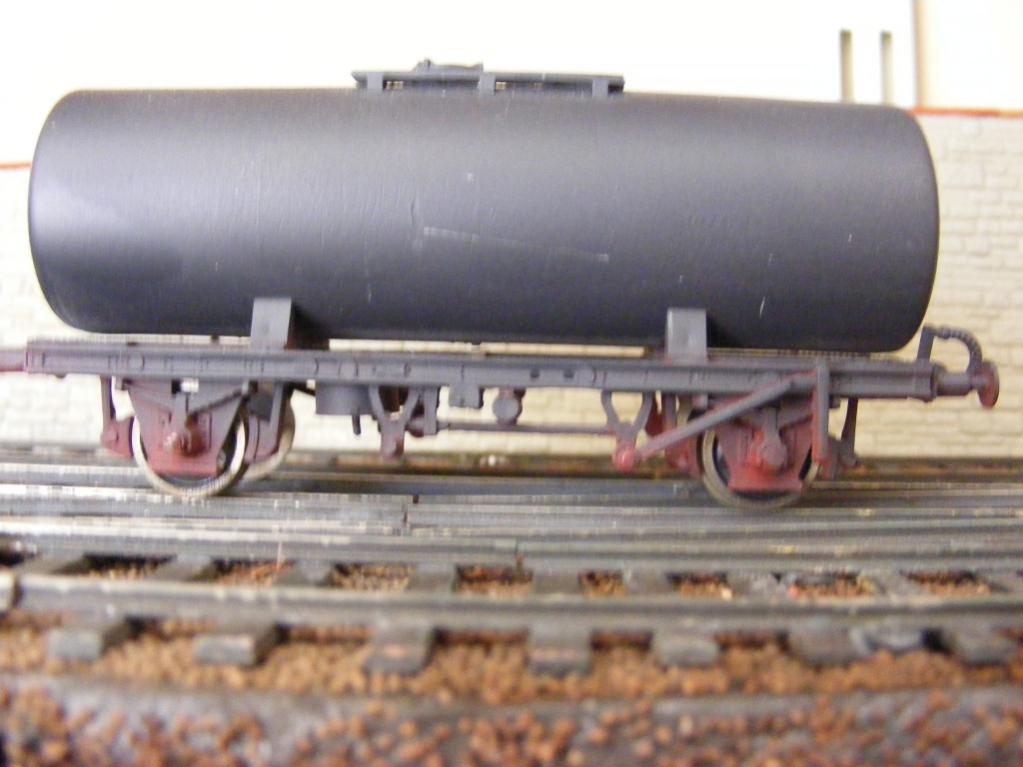
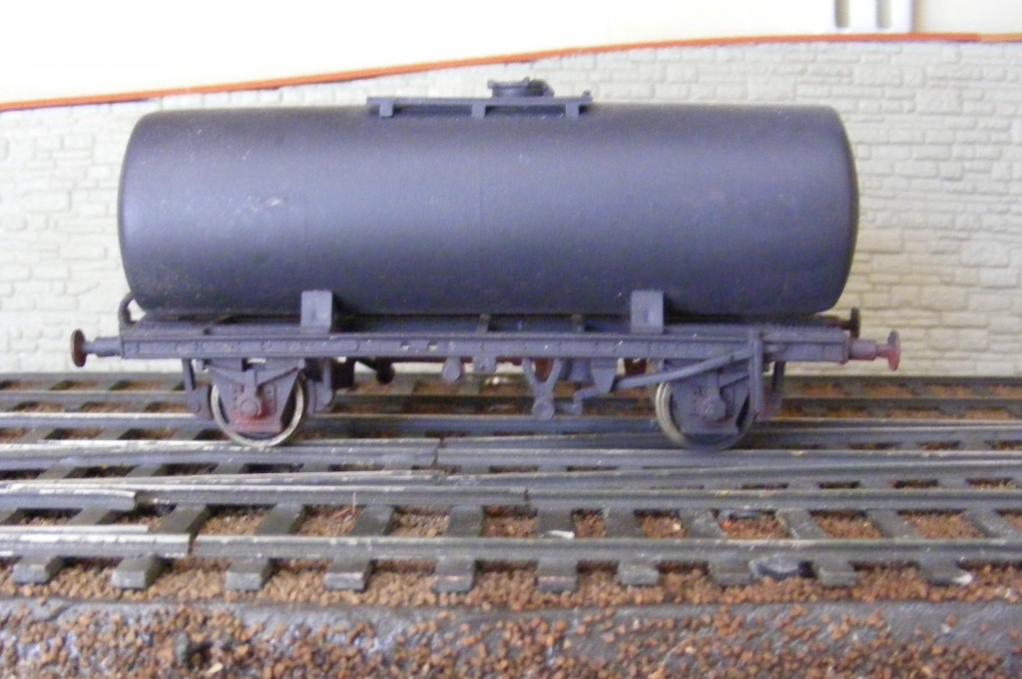



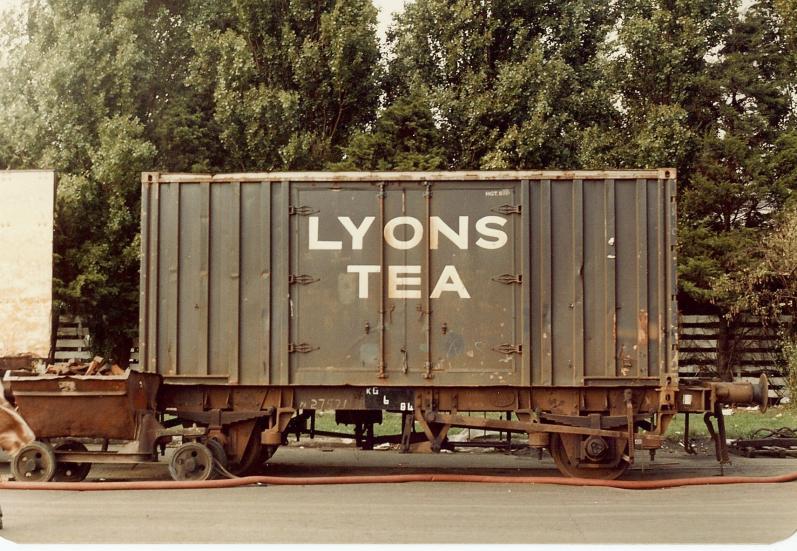

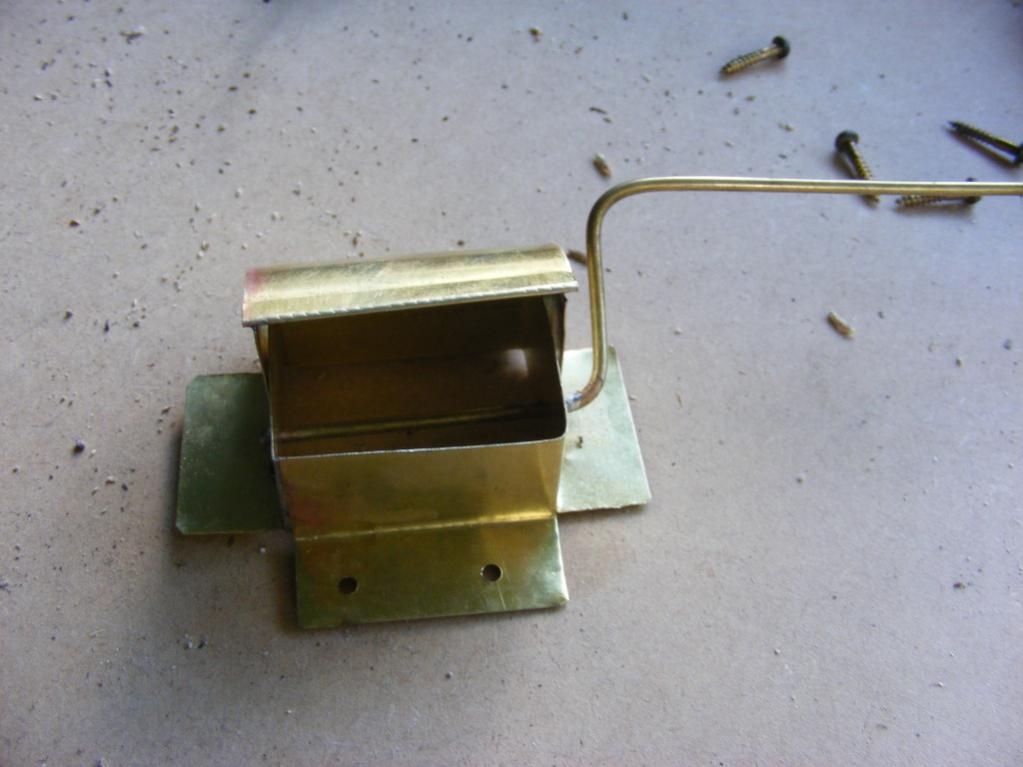
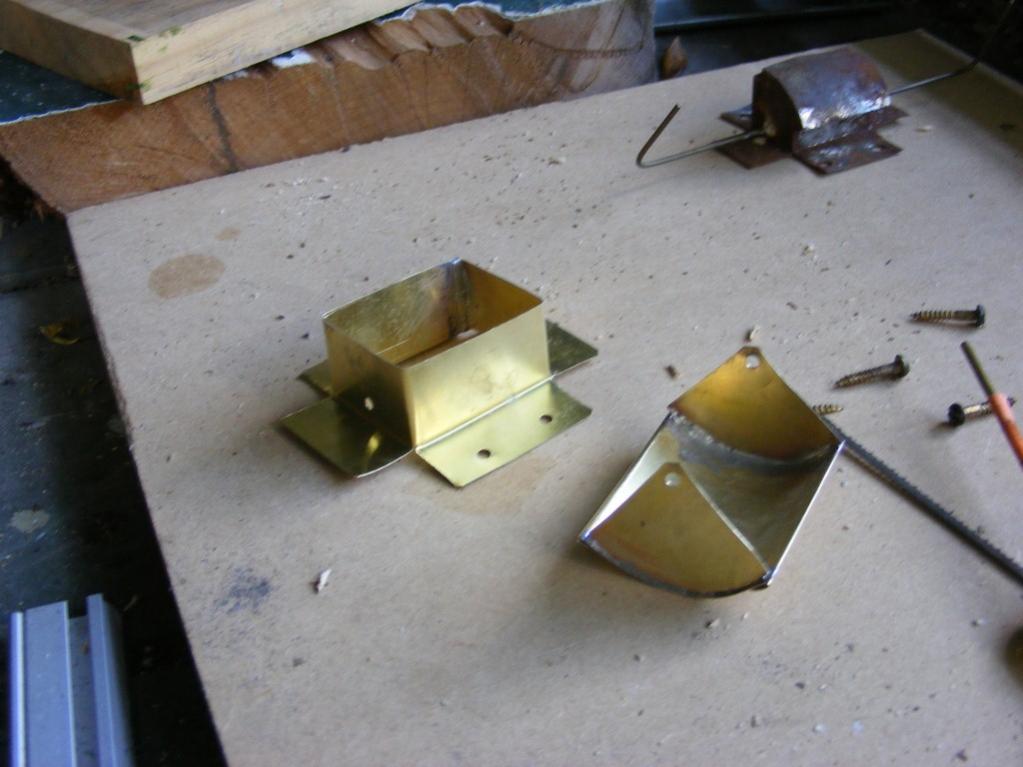



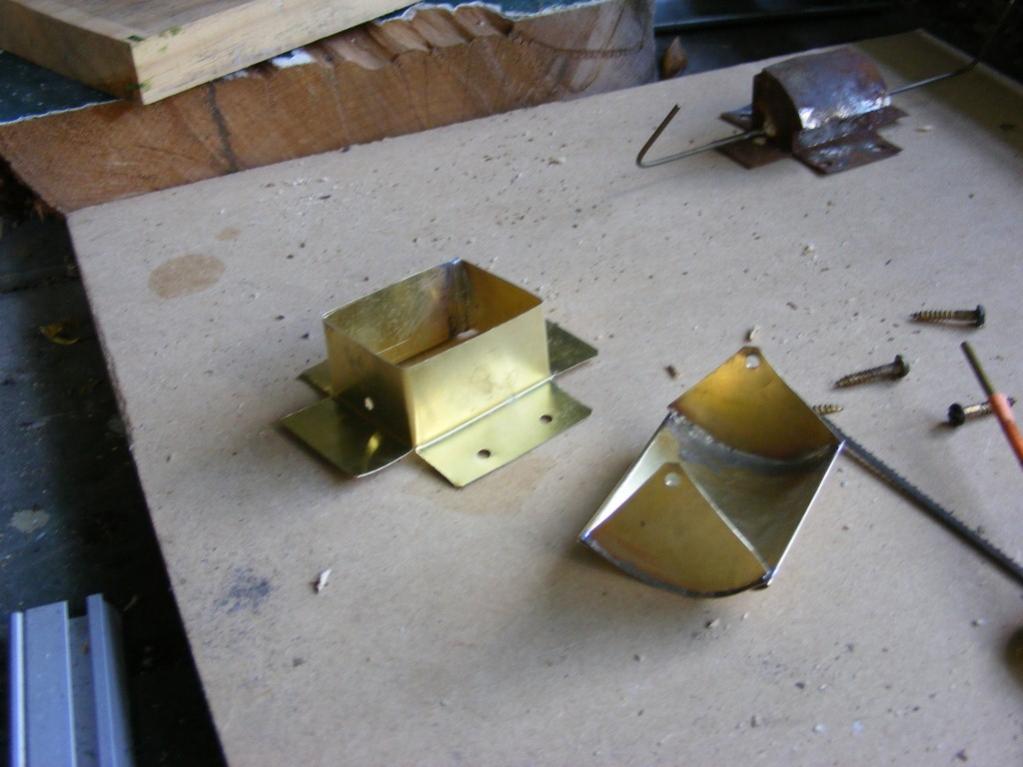
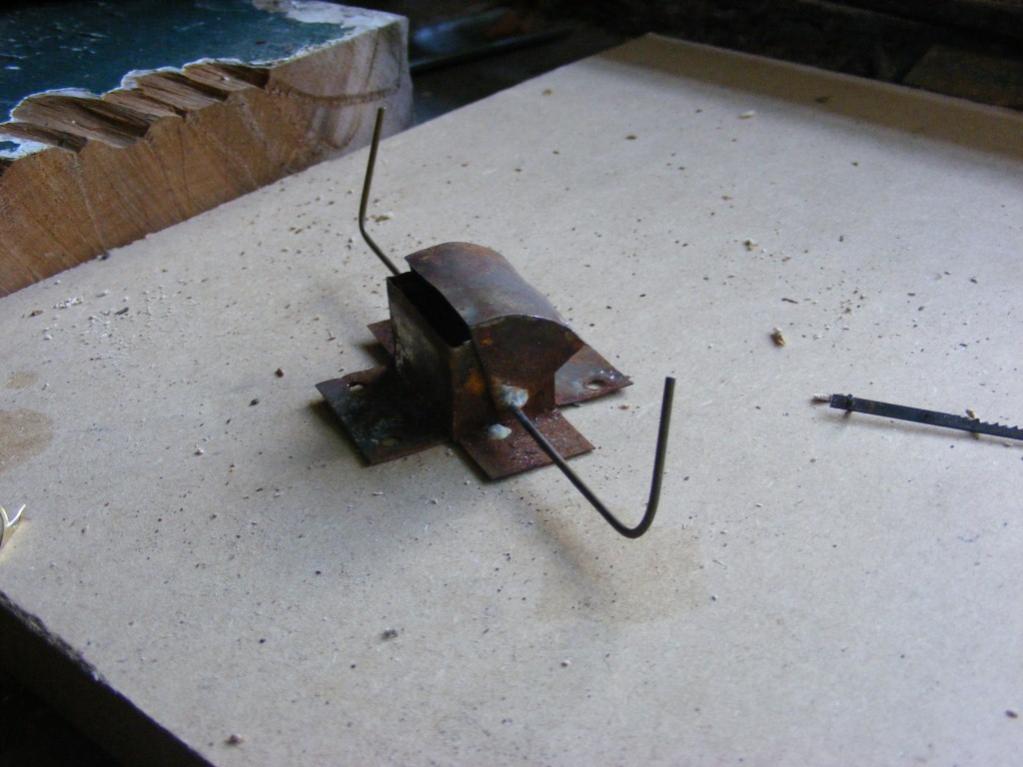

Q&A From Down Under
in Questions & Answers
Posted
Frank
Does anyone produces rtr models or kits of Tassie locos or stock? I spent a very enjoyable week several years ago exploring the railways while the wife was at a conference in Launceston.
Some excellent museums and preservation sites and interesting main line operation with large English Electric powered road switchers.
John